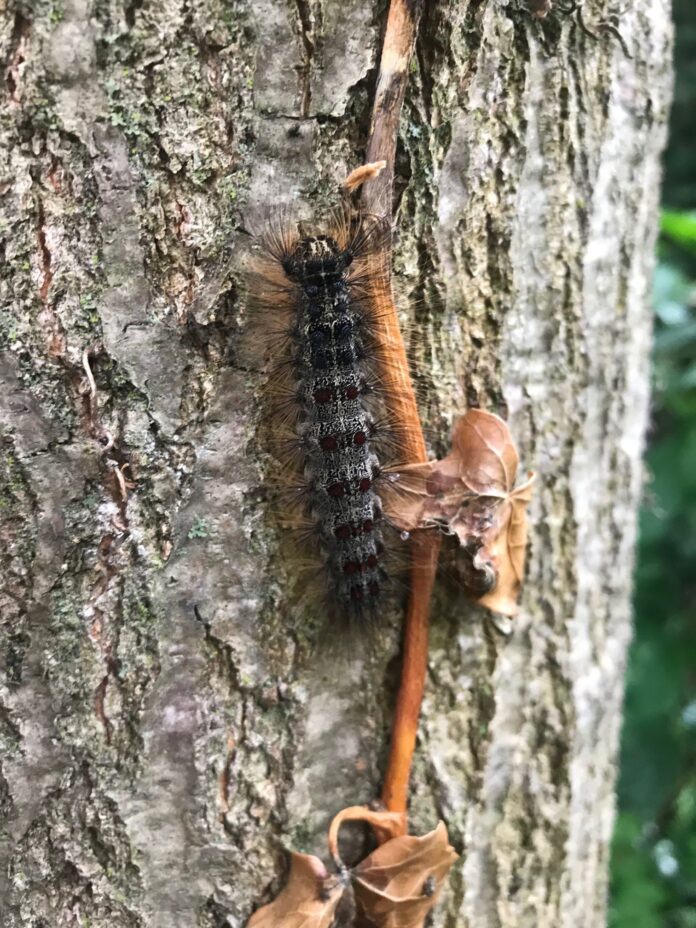
by Mark & Ben Cullen
Gardening
Insects are our friends.
Without them the web of nature collapses. That is how important insects are to the world in which we live.
However, insect hotels aside, even we agree that there are a few insect pests that are worthy of control.
Here is a list of the most prevalent insect pests that invade our gardens this time of year and our recommended non-chemical controls:
1. Japanese beetle. Hello climate change. A generation ago, this common garden pest was not known in these parts, as our winters were severe enough to kill them off. Now, Japanese beetles love to forage on lawns, linden trees, Virginia creeper vines, roses and many more. They are voracious. You may read elsewhere that the best control is hand picking. We say “nonsense”. Once you start, you might as well quit your day job as this becomes endless. Pheromone (ie. sex) traps work best in the urban garden. Hang them where the problem is most persistent and empty them at least once a week.
2. Gypsy moth. The caterpillar of the gypsy moth arrives in such quantities that the word hordes is appropriate here. Many municipalities have sprayed with the relatively benign bacillus thurengensis or BT when the moth is in larvae stage. This liquid reacts with the lining of the stomach of the larvae causing them to burst at the seams. Not nice. But neither is the defoliation of your trees when they arrive. Or the frass, their droppings, as they fall from the trees above. The stickiest stuff in the universe must be Tanglefoot. Squeeze a ring of this around the girth of a tree, just below the lowest branches and larvae get stuck in it. We hear reports that supplies are limited and other reports that small birds can get stuck in it (it is THAT sticky) and can be harmed or die. You can hand pick and drop into a pail of water with some veggie oil floating in it. Note that gypsy moth rarely kills a tree, despite the leafless condition that they leave them in.
3. Grubs. White grubs, grey grubs, they both munch on grass roots and cause damage. But not as much as the racoons, skunks, and possum that route through your lawn at night looking for them. Grubs are shrimp cocktails to vermin. Control them now with nematodes, available from garden retailers. Mix them with water and spray the solution on your lawn and water it thoroughly. Nematodes are naturally occurring and will not harm your plants.
4. Potato beetle. If you grow potatoes, you have the Colorado potato beetle. Where do they come from? We have no idea. At one time Colorado, but now, here, they are Ontario potato beetles. Hand pick them or apply a dry powder of silicone dioxide or diatomaceous earth. Packaged in a squeeze bottle and sold as an ant or crawling insect control. This is ground-up fossilized insects, ironically, that removes the waxy protective coating on the belly of the beetle. Reapply after a rain or watering.
5. Cabbage moth. The pretty white, smallish butterfly that you see flitting around your yard is laying eggs of small green caterpillars of the cabbage moth. Unlike a Cabbage patch doll, which is fun and cuddly, the moth larvae are hungry for the leaves of any member of the cabbage family, including broccoli, brussels sprouts and of course cabbage. Silicone dioxide works well in dry weather. A butterfly net works, but if you catch a desirable butterfly, thank it, and let it go.
Which brings us to the nut of this issue. 99% of all insects are beneficial and provide yeomen’s service in the natural cycle of eat and be eaten in the world of nature. A nesting family of Downy woodpeckers will consume up to 14,000 caterpillars a day (busy mom), so we need them.
There are many pest-controlling friends to the gardener. Songbirds, and bats forage for insects this time of year with abandon. Frogs and toads eat flying insects including mosquitoes. Snakes, possums, skunks and even raccoons will seek out ground insects and gobble them up.
We have friends in the pest control department. Let us not rock that boat.
Mark Cullen is an expert gardener, author, broadcaster, tree advocate and Member of the Order of Canada. His son Ben is a fourth-generation urban gardener and graduate of University of Guelph and Dalhousie University in Halifax. Follow them at markcullen.com, @markcullengardening, and on Facebook.

